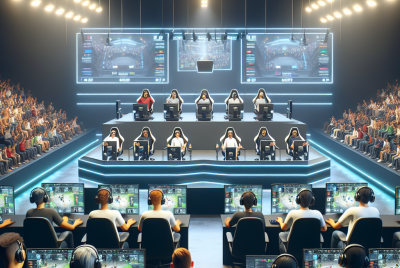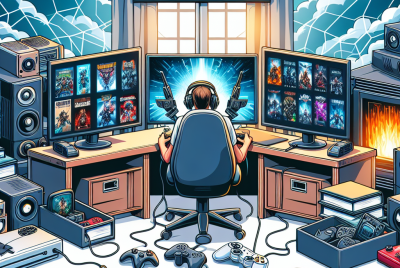The Enduring Appeal of Retro Video Games
The Enduring Appeal of Retro Video Games
Nostalgia and Emotional Connection
The allure of retro video games transcends mere gameplay; it is deeply rooted in nostalgia. For many gamers, titles from the 80s and 90s evoke cherished memories of childhood and simpler times. The emotional connections formed with characters and narratives resonate powerfully, often serving as a comforting escape from the complexities of modern life. Parents who grew up playing classic games often introduce them to their children, creating a multi-generational bridge through shared experiences.
Nostalgia plays a significant role in consumers’ choices. Research indicates that nostalgia can enhance mood and encourage social bonds. Retro video games tap into this phenomenon by reviving fond memories. These emotional recollections not only fuel interest but also lead to the formation of vibrant communities centered around classic gaming culture.
Unique Gameplay Mechanics
The gameplay mechanics of retro video games stand in stark contrast to contemporary titles. Often, older games emphasized simplicity, focusing on core mechanics rather than overwhelming players with complex narratives and extensive character builds. Games like Super Mario Bros. and Tetris exemplify this pure form of gameplay, where mastery comes through practice and perseverance rather than intricate strategies.
This accessibility attracts both seasoned gamers and newcomers alike. With many retro titles featuring straightforward controls and objectives, they serve as an ideal entry point for those unfamiliar with video gaming. The challenge often lies not in complexity but in honing skills and achieving high scores, a concept that many modern games overlook.
Aesthetic Appeal
Visually, retro video games offer a unique charm that differentiates them from high-definition, graphically immersive modern titles. The 8-bit and 16-bit graphics evoke a distinctive style that has become iconic. Games like The Legend of Zelda and Pac-Man are not only remembered for their gameplay but also for their unforgettable art styles, pixelated characters, and chip tune soundtracks.
The aesthetic appeal of retro games has inspired a resurgence in pixel art among indie developers, leading to new games that mimic the charm of the classics. This trend cultivates a sense of authenticity and appreciation for the craft of game design among modern developers and players alike.
Cultural Impact
Retro video games have left an indelible mark on culture, influencing everything from fashion to music. References to classic games are prevalent in movies, television shows, and comics, often as a homage to their status as cultural touchstones. Characters like Mario and Sonic have become icons recognized even by those who have never played their games.
Gaming conventions and community events dedicated to retro gaming have gained popularity, celebrating this cultural heritage. These gatherings have become fertile ground for networking among enthusiasts and developers, further solidifying the genre’s place in contemporary culture.
Accessibility and Platform Availability
Today, retro video games are more accessible than ever, thanks to a variety of platforms. Console manufacturers have revived classic titles through mini-consoles such as the NES Classic Edition, which allows modern players to experience these games without needing original hardware. Furthermore, digital marketplaces like Steam, GOG, and the Nintendo eShop offer a treasure trove of retro titles for easy download.
Emulators enable gamers to play classic games on modern systems, broadening their reach beyond the nostalgia-bounded audience. As a result, anyone with an internet connection can explore the vast library of retro games, potentially introducing new generations to these timeless classics.
Community and Online Culture
The online gaming community has embraced retro games, fostering an environment where enthusiasts can share tips, strategies, and experiences. Streaming platforms such as Twitch and YouTube feature dedicated content creators who focus on retro gameplay, attracting viewers who appreciate this slice of gaming history.
Forums and social media groups devoted to retro gaming provide spaces for discussion and camaraderie. This engagement has led to a collective appreciation of classic games, turning nostalgia into a shared cultural phenomenon. Gamers discuss forgotten gems, competitive high scores, and even create fan art and remixes of classic soundtracks, further enriching the community.
The Indie Development Revolution
The rise of indie game developers has also contributed significantly to the retro gaming revival. Many indie developers draw inspiration from classic games, combining nostalgic elements with modern gameplay innovations. Titles like Celeste and Shovel Knight have not only achieved commercial success but revitalized interest in old-school gaming mechanics.
These indie games often embrace the philosophy of “less is more,” focusing on tight controls and engaging gameplay rather than overwhelming graphics or complicated storylines. This trend has led to a renaissance of retro-inspired titles that appeal to both veteran gamers and a new audience seeking authentic experiences.
Retro Gaming Events
Local and global events dedicated to retro gaming, such as conventions and tournaments, have sprung up in response to the growing interest. Events like the Classic Gaming Expo and the Portland Retro Gaming Expo feature vendors, panels, and tournaments, fostering an environment for enthusiasts to celebrate their passion. These events increase visibility for both the games and the culture surrounding them.
Additionally, competitive gameplay in classic games is thriving. Speedrunning, a practice where players aim to complete games as quickly as possible, has gained a massive following. The community surrounding speedrunning embraces retro titles, creating a fusion of competition and nostalgia that enchants gamers and spectators alike.
Preservation of Gaming History
The preservation of gaming history is crucial to understanding the evolution of the medium. Many retro titles face the risk of being forgotten as technology advances. Organizations like the Video Game History Foundation and the Strong National Museum of Play work tirelessly to archive and preserve these classics, ensuring that future generations have access to gaming’s rich heritage.
Preserving the history of retro video games enriches our understanding of the medium’s development, allowing us to appreciate innovations that shaped modern gaming. These efforts are supported by gaming communities and fans who contribute their knowledge, resources, and passion for preservation.
Contributing Factors to Continued Popularity
In summary, the enduring appeal of retro video games can be attributed to several interlinked factors: nostalgia and emotional connections, unique gameplay mechanics, aesthetic charm, cultural impact, accessibility, and an engaged community. The fusion of classic elements with modern technology and design philosophies has paved the way for a rich gaming landscape that honors the past while pushing forward into the future.
As retro gaming continues to thrive, the influence of these cherished classics will undoubtedly shape the next generation of developers and players, securing their legacy for many years.




